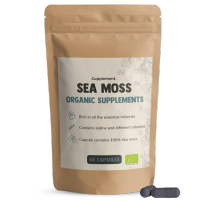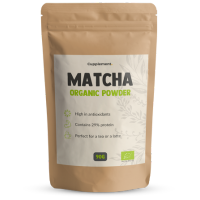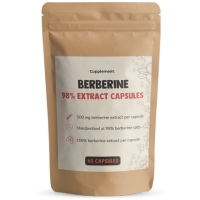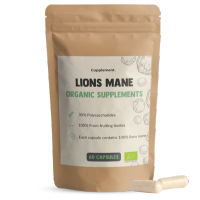
The most popular natural salts
-
Not all salt is the same; there are major differences in origin, minerals and uses .
-
Fleur de Sel , Celtic Sea Salt , Himalayan Salt and Dead Sea salt are all natural salts that differ in taste, structure and effect.
-
Some varieties are ideal for cooking , others for skin care or relaxation .
-
Discover which salt suits you best, for taste, wellness or balance.
What is natural salt?
Not all salt is the same, despite initial appearances. Behind each crystal lies a world of difference in origin, composition, color, and flavor. From bright white to soft pink or gray: each salt has its own unique character and purpose.
Whether you're cooking, relaxing in the bath, or simply being more mindful of your diet, your choice of salt can really make a difference.
In this blog post, you'll discover the four most popular natural salts: Fleur de Sel, Celtic Sea Salt, Himalayan Salt, and Dead Sea Salt. What makes them unique, what are they used for, and why are more and more people choosing these natural alternatives?
The 4 most famous types of natural salt
1. Fleur de Sel: the “caviar” among salts
Fleur de Sel (French for "flower of salt") is harvested by hand from the surface of salt pans in France. It forms a thin layer on the surface of the water, which is carefully skimmed off before sinking to the bottom.
What makes this salt special is its fine, crunchy texture and light, pure taste .
It naturally contains minerals such as magnesium and calcium , which increases flavor complexity.
Uses: Fleur de Sel is the perfect finishing salt . Sprinkle it directly onto the plate, for example, over grilled vegetables, meat, fish, or chocolate. It melts slowly and subtly enhances the flavor without being overpowering.
2. Celtic Sea Salt: gray, moist and full of minerals
Celtic sea salt , also called “sel gris”, comes from the salt marshes of Brittany in France.
It is extracted in a traditional way and is often light grey and moist due to the clay in the salt pans.
Unlike refined table salt, Celtic sea salt still contains natural minerals like magnesium, potassium, and calcium . It has a mild, rounded salty flavor without a sharp aftertaste.
Usage: Celtic salt is ideal as a general table salt , especially for stews, soups, or vegetable dishes. Its moist nature makes it dissolve more slowly, perfect for slow-cooked preparations .
3. Himalayan salt: the pink gold from Pakistan
Himalayan salt , also known as pink salt , is mined from the Khewra Salt Mine in Pakistan: one of the oldest salt mines in the world.
The characteristic pink color comes from traces of iron, magnesium and calcium .
Although it is similar in sodium content to regular table salt, many people value Himalayan salt for its pure origins and natural minerals .
Usage: Popular as a mild table salt , but also used outside the kitchen; in salt lamps, bath salts, or wellness products . Himalayan salt is known as a pure and unrefined alternative to refined table salt.
4. Dead Sea salt: mineral-rich and perfect for the skin
Dead Sea salt is unique because it contains much less sodium chloride than table salt. The remainder is made up of magnesium, calcium, potassium, bromine, and sulfate minerals naturally occurring in the Dead Sea.
It is extracted by evaporating Dead Sea water , leaving a high mineral concentration. This composition makes the salt popular in skincare and wellness .
Uses: Ideal for baths, scrubs, or relaxing therapies . A Dead Sea salt bath can help relax muscles and hydrate and soften the skin .
Why choose natural salt?
-
Less processed: Natural salts are not refined and do not contain anti-caking agents.
-
Rich in minerals: They contain small amounts of magnesium, calcium and potassium.
-
Better taste: Natural salts have more depth and nuance than standard table salt.
-
Versatile use: Some salts are perfect for cooking, others for wellness and skin care.
Conclusion
Whether you choose Fleur de Sel to finish dishes, Celtic Sea Salt for added minerals, Himalayan Salt for its pure character, or Dead Sea Salt for relaxation, each salt has its own unique benefits.
They're all natural, unrefined , and richer in composition than standard table salt. A conscious choice for natural salt isn't just a difference in taste, but also a step toward greater purity and balance in your daily routine.
Frequently asked questions about natural salt
Which salt is healthiest?
There is no such thing as “healthy” salt if consumed in excess; sodium is still sodium.
However, Himalayan salt and Celtic sea salt are popular because of their natural minerals and minimal processing.
Why is Himalayan salt pink?
The color comes from iron particles and other minerals present in the salt layers.
What does Dead Sea salt do for the skin?
The high concentration of magnesium, potassium, and calcium helps relax, hydrate, and restore the skin. Therefore, it's often used in baths, scrubs, and spa treatments.
What is the difference between sea salt and table salt?
Table salt is refined and often contains anti-caking agents. Sea salt and other natural salts are extracted from seawater or mines and retain their minerals and structure.
What is the best way to store salt?
Store salt in a dry, sealed place. Celtic sea salt, in particular, can clump due to its moisture, so a tightly sealed jar is ideal.
















